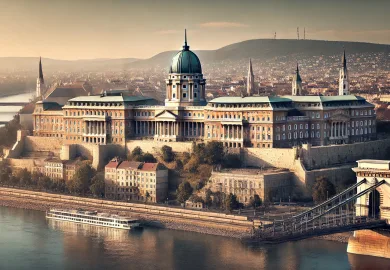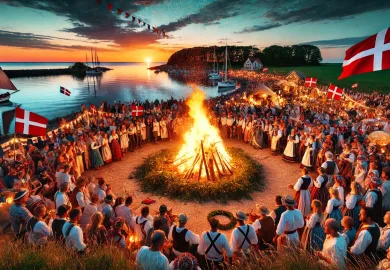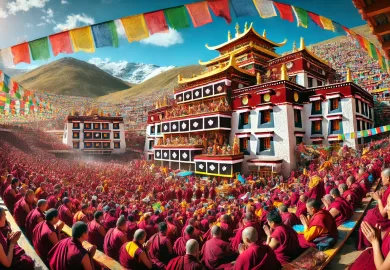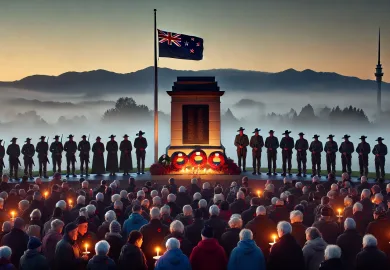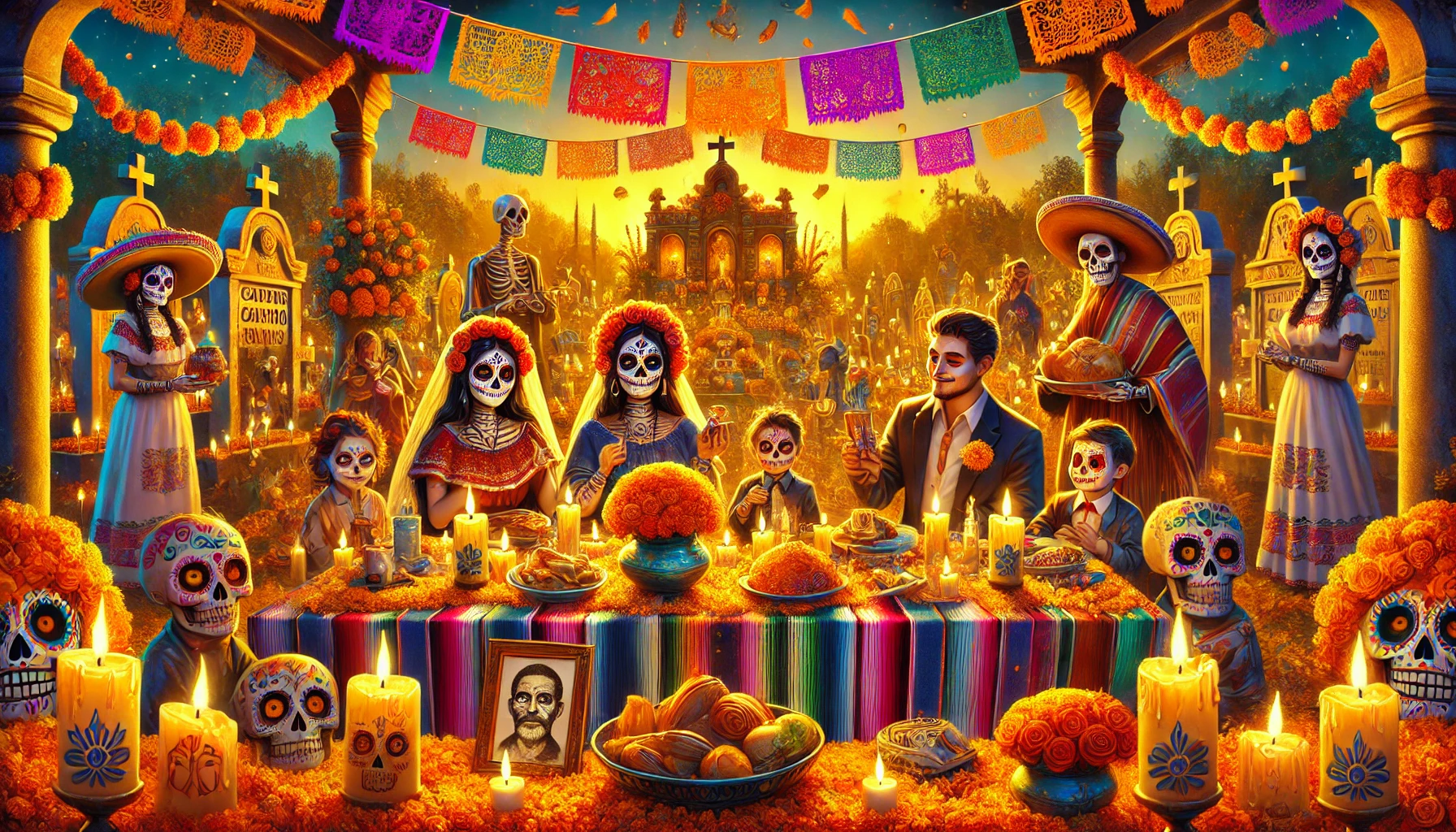
Día de los Muertos, or the Day of the Dead, is one of Mexico’s most colorful and culturally rich traditions. Celebrated on November 1st and 2nd, this holiday is a time for families to come together to honor and remember their deceased loved ones. Far from a somber occasion, Día de los Muertos is a vibrant celebration of life and death, filled with music, food, and elaborate decorations. This deeply rooted tradition combines indigenous practices with Spanish Catholicism, creating a unique cultural experience that is both sacred and festive.
The Origins and Significance of Día de los Muertos
Día de los Muertos has ancient roots that trace back to the pre-Hispanic cultures of Mesoamerica, particularly the Aztecs, who believed that death was a natural part of life. The Aztecs, along with other indigenous groups, held a cyclical view of the universe, where death was not the end but rather a continuation of the journey in the afterlife. They believed that the spirits of the deceased would return to the world of the living during specific times of the year to be with their families.
With the arrival of the Spanish conquistadors in the 16th century, indigenous beliefs merged with Catholic practices, particularly the observances of All Saints’ Day and All Souls’ Day. This fusion gave birth to the modern Día de los Muertos celebration, which honors both the indigenous and Catholic traditions. The holiday is now celebrated with a mixture of solemnity and joy, reflecting the Mexican belief that death is not something to be feared but embraced as a natural part of life.
Today, Día de los Muertos is recognized as an Intangible Cultural Heritage by UNESCO, highlighting its significance and the need to preserve this unique cultural expression. The holiday is celebrated not only in Mexico but also in various parts of the world where Mexican communities have settled, bringing their rich traditions with them.
The Ofrenda: A Heartfelt Tribute to the Departed
One of the most important aspects of Día de los Muertos is the creation of the ofrenda, or altar. These altars are meticulously decorated with a variety of offerings that honor the deceased and invite their spirits back to the world of the living. The ofrenda is typically set up in homes, cemeteries, or public spaces and is a focal point of the celebration.
The ofrenda is a deeply personal tribute, often featuring photographs of the deceased, along with their favorite foods, drinks, and personal items. Each element of the altar carries symbolic meaning. For example, marigold flowers, known as cempasúchil, are used to guide the spirits to the altar with their bright colors and strong fragrance. Candles are placed to light the way for the spirits, while incense, usually made of copal, is burned to purify the area and ward off evil spirits.
Another essential component of the ofrenda is the presence of sugar skulls, or calaveras, which represent the deceased. These skulls are often decorated with vibrant colors and patterns, symbolizing the celebration of life even in death. Pan de muerto, a special bread made for the occasion, is also placed on the altar, often shaped to resemble bones or adorned with sugar decorations. The ofrenda is a beautiful and poignant way for families to connect with their ancestors and keep their memory alive.
Celebratory Rituals and Festivities
Día de los Muertos is a time of lively celebrations, where communities come together to honor the dead with music, dance, and feasting. The holiday is marked by various rituals that blend solemn remembrance with joyous festivities, reflecting the belief that death is not an end but a continuation of life.
One of the most iconic aspects of the celebration is the procession to the cemetery, where families gather to clean and decorate the graves of their loved ones. Graves are adorned with marigolds, candles, and sometimes even with personal items belonging to the deceased. Families spend the night in the cemetery, sharing food, stories, and memories of the departed. This tradition, known as the velación, is a way for families to be close to their loved ones, believing that their spirits return to join them.
In addition to the cemetery rituals, Día de los Muertos is also celebrated with parades and public festivals. The La Calavera Catrina, an elegantly dressed skeleton figure created by Mexican artist José Guadalupe Posada, has become a symbol of the holiday. People often dress as Catrinas, with elaborate face paint and costumes, participating in parades that fill the streets with music, dance, and laughter.
Traditional Mexican music, such as mariachi and banda, is an integral part of the festivities, as is the consumption of traditional foods. Families prepare large meals to share with both the living and the dead, including dishes like tamales, mole, and atole, a warm corn-based drink. The holiday is a time for families and communities to come together, celebrating life, death, and the enduring bonds that connect them.
The Global Influence and Modern Adaptations of Día de los Muertos
While Día de los Muertos is deeply rooted in Mexican culture, its influence has spread far beyond Mexico’s borders. The holiday has gained global recognition, particularly in the United States, where it is celebrated by Mexican-American communities and others who appreciate its rich cultural significance. This spread of Día de los Muertos has led to various adaptations and interpretations of the tradition, blending it with local customs and contemporary practices.
In the United States, for example, Día de los Muertos has been embraced as a celebration of Latino identity and culture. Cities with large Mexican populations, such as Los Angeles, San Antonio, and Tucson, host large-scale Día de los Muertos events that include parades, art exhibitions, and community altars. These events serve not only as a way to honor the dead but also as a celebration of Mexican heritage and a means of cultural preservation.
The holiday has also found its way into popular culture, with references in films, television, and art. The 2017 animated film “Coco” by Pixar, which beautifully depicted the customs and meanings of Día de los Muertos, brought the tradition to a global audience, earning both critical acclaim and a deeper appreciation for the holiday’s significance. This widespread recognition has helped to preserve and promote the tradition, ensuring that it continues to be passed down to future generations.
While the global adaptation of Día de los Muertos has been largely positive, some concerns have been raised about the commercialization and potential cultural appropriation of the holiday. It is essential to approach Día de los Muertos with respect and understanding, recognizing its deep cultural roots and the spiritual significance it holds for those who celebrate it. By honoring the traditions and meaning behind the holiday, Día de los Muertos can continue to be a vibrant and meaningful celebration for people around the world.
Día de los Muertos is more than just a holiday; it is a profound expression of Mexican culture, blending ancient traditions with modern practices to honor the dead and celebrate life. The vibrant colors, music, and rituals of Día de los Muertos reflect a worldview where life and death are intertwined, and where the memories of loved ones are cherished and kept alive. As this tradition continues to grow and evolve, it remains a testament to the enduring power of cultural heritage and the universal human need to remember and honor those who have passed on.

